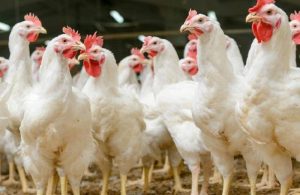Background
Following an initial reduction in human campylobacteriosis in New Zealand after the implementation of poultry food chain-focused interventions during 2006–2008, further decline has been relatively small.
 We report a year-long study of notified campylobacteriosis cases, incorporating a case control study combined with a source attribution study. The purpose was to generate up-to-date evidence on the relative contributions of different sources of campylobacteriosis in New Zealand.
We report a year-long study of notified campylobacteriosis cases, incorporating a case control study combined with a source attribution study. The purpose was to generate up-to-date evidence on the relative contributions of different sources of campylobacteriosis in New Zealand.
Methods
The study approach included:
A case-control study of notified cases (aged six months or more) sampled in a major urban centre (Auckland, every second case) and a mixed urban/rural area (Manawatū/Whanganui, every case), between 12 March 2018 and 11 March 2019.
Source attribution of human campylobacteriosis cases sampled from these two regions over the study period by modelling of multilocus sequence typing data of Campylobacter jejuni and C. coli isolates from faecal samples of notified human cases and relevant sources (poultry, cattle, sheep).
Results
Most cases (84%) were infected with strains attributed to a poultry source, while 14% were attributed to a cattle source. Approximately 90% of urban campylobacteriosis cases were attributed to poultry sources, compared to almost 75% of rural cases.
Poultry consumption per se was not identified as a significant risk factor. However specific risk factors related to poultry meat preparation and consumption did result in statistically significantly elevated odds ratios.
Conclusions
The overall findings combining source attribution and analysis of specific risk factors indicate that poultry meat remains a dominant pathway for exposure and infection.
Source attributed case-control study of campylobacteriosis in New Zealand, 01 February 2021
International Journal of Infectious Diseases vol. 103
R.J. Lake, D.M. Campbell, S.C. Hathaway, E. Ashmore, P.J. Cressey, B.J. Horn, S. Pirikahu, J.M. Sherwood, M.G. Baker, P. Shoemack, J. Benschop, J.C. Marshall, A.C. Midwinter, D.A. Wilkinson, N.P. French
DOI:https://doi.org/10.1016/j.ijid.2020.11.167
https://www.ijidonline.com/article/S1201-9712(20)32479-6/fulltext
